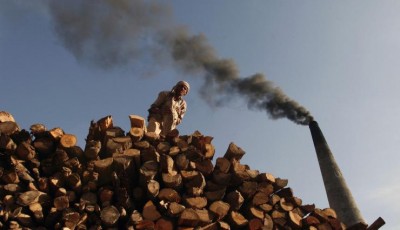China’s carbon emissions may have been a lot lees than we thought
Researchers suggested that none of the previous studies that taken this into consideration despite the fact that China is one of the major consumers of coal.
China’s carbon emissions may be significantly lower than previously thought – about 14% less in 2013 than estimated by the Chinese government and others, according to research published this week in Nature.
The study examined fuel quality in great detail – something the authors say is missing from other estimates. So, if China’s emissions fall by 15%, the global Carbon dioxide emission will be 5% less. Emissions from China’s cement production were 45 per cent less that recent estimates. The red-shaded area indicates the 95% uncertainty range of carbon emissions calculated by this study, assuming the emission factors during the period 19902013 are the same as those determined for 2012 in this study.
The new estimate, however, does not change China’s rank as the world’s top carbon polluter.
“The fundamental calculation requires knowledge of the amount of fuel consumed and the efficiency of burning or the oxidation rate, but you also have to know the carbon content of the fuel”, Boden said.
The new estimate comes from a re-evaluation of emissions from the burning of fossil fuels as well as cement production in China from 1950-2013, figures that have varied by as much as 40 percent depending on the data used.
Even though China recently undertook to measure its greenhouse gas emissions more effectively, the country wants to do so on its own terms.
Corinne Le Quéré, director of the Tyndall Centre for Climate Change Research at the University of East Anglia, said in a statement that there are many uncertainties in Chinese carbon emissions data.
They found the emissions factor for oil used in China was marginally lower than previously thought, and for gas it was 13% higher. Currently, coal accounts for 65 percent of China’s total primary energy consumption – a dependence that has cast doubts over whether the country would be able to fulfill its commitment to cut emissions per unit of GDP by up to 65 percent below 2005 level by 2030. However, emission factors for Chinese coal were on average 40 per cent lower than the default levels recommended by the IPCC.
His team’s findings do not unseat China from its position as the world’s largest emitter of carbon dioxide.
“We measured thousands of samples of coal from mines across China, and found that the carbon content of the coal being burnt in China is actually much lower than what has been assumed in previous estimates of emissions”, said Assistant Professor Steven Davis, a greenhouse gas scientist at the University of California Irvine and one of the authors, in emailed answers to questions.
The research would enable the nation to take a leading role and encourage other major coal-consuming countries like India to develop more accurate emission measurements, he said.
Regardless of past totals, the focus should be on reducing emissions, says Wang Yi, deputy director-general of the Institute of Policy and Management at the Chinese Academy of Sciences in Beijing, who was not involved in the study.












